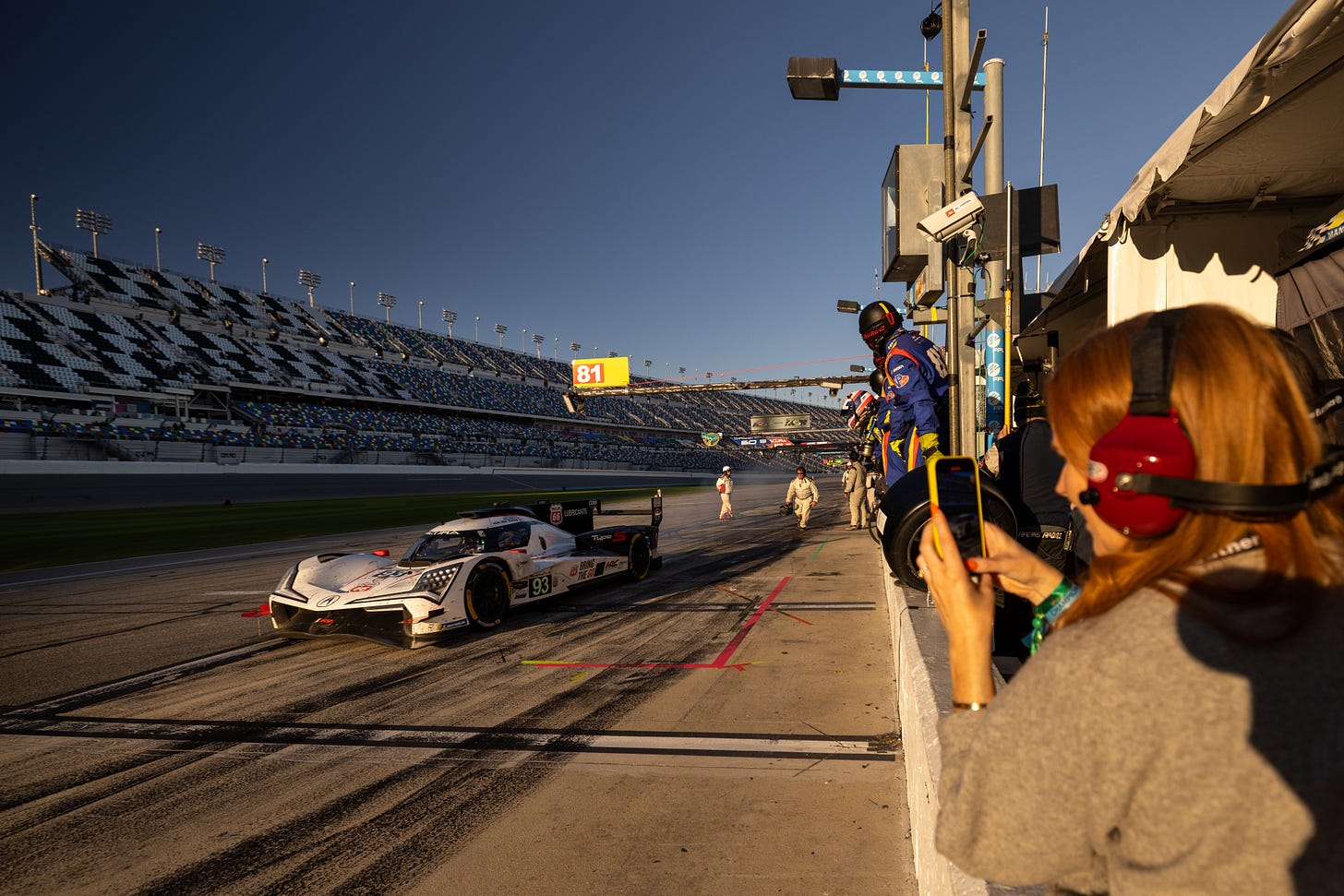Rolex, F1, and the Billion-Dollar Shift
And Why the Crown Now Belongs to Endurance Racing.
Thank you for being here. You’re receiving this email because you subscribed to Idée Fixe, the newsletter for curious minds. I’m Toni Cowan-Brown, a tech and sports commentator. I’ve spent the past five years on the floor of many F1, FE, and WEC team garages. I use F1 as my excuse to talk about tech, politics and the business of sports. I hope you’ll stick around.
The Timekeepers of Motorsports
As Formula 1 enters a new era under LVMH’s record-breaking $1 billion, 10-year deal, the Swiss watchmaking giant is stepping away from the series and doubling down on a racing discipline that has long been embedded in its DNA: endurance racing*.
But make no mistake - this isn’t a retreat; it’s a calculated masterstroke. While LVMH and its brands, like TAG Heuer and Louis Vuitton, prepare to dominate the world of F1 as I had previously mentioned they would, Rolex is securing an even stronger foothold in a racing discipline where it enjoys unrivalled prestige. This isn't just about sponsorship and visibility - it’s about brand identity, legacy, and ensuring that the most coveted prize in motorsport isn’t a trophy, but a Rolex watch.
*Rolex invited me to join the Rolex 24 at Daytona press trip and host a panel with three Rolex testimonees - Scott Pruett, Hurley Haywood and Tom Kristensen, an invitation I have never said yes to faster. Thank you to Rolex for their hospitality.
Visual Diary | Rolex 24 at Daytona Press Trip
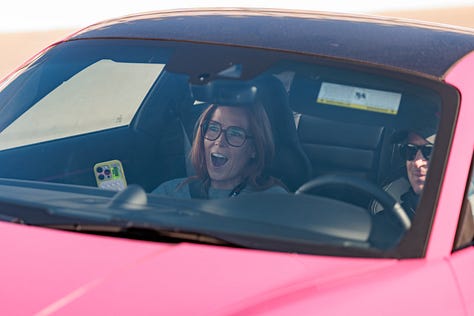

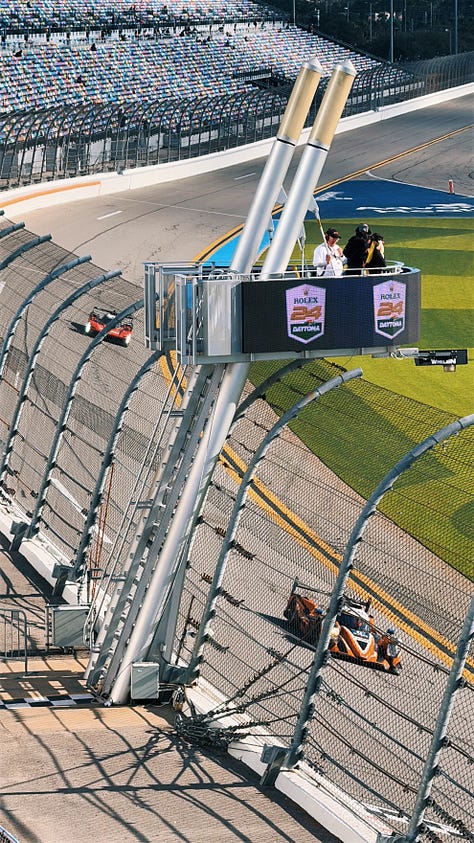
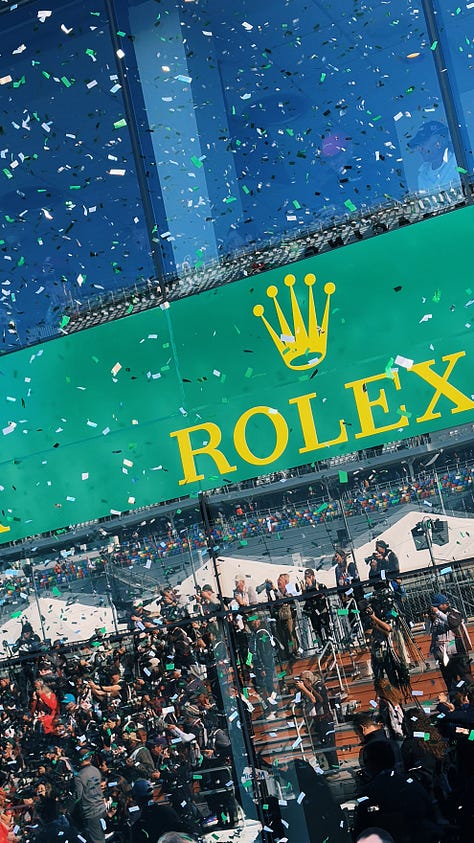
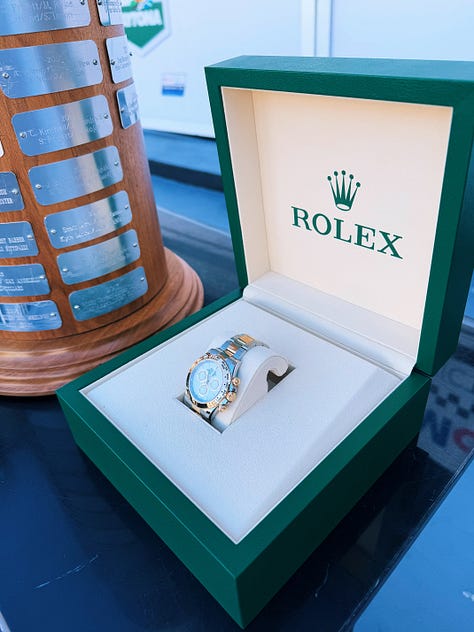

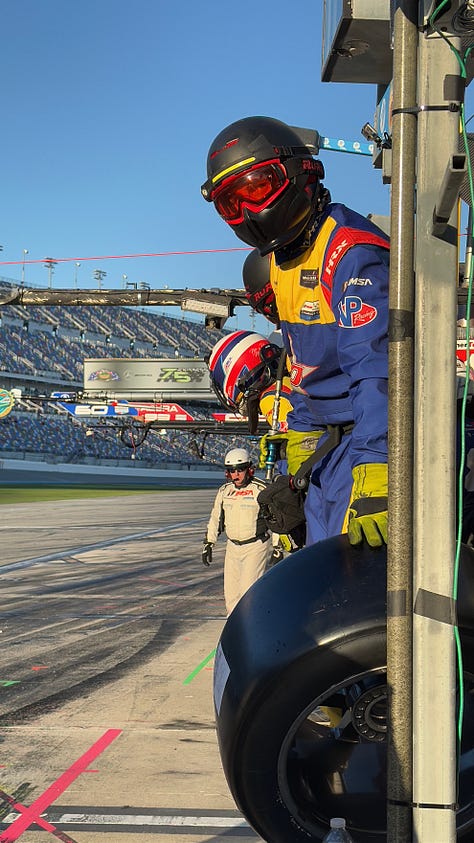


A Storied Partnership in Formula 1
For over a decade, Rolex has been the official timekeeper of Formula 1, a partnership that perfectly aligned with the brand’s commitment to precision, performance, and prestige. From the meticulous engineering of an F1 car to the split-second strategies that define a race, Rolex’s presence at the pinnacle of motorsport felt as natural as the ticking of its legendary timepieces (I say this full of confidence even though I do not own one of these timepieces). The iconic Rolex logo found in and around the F1 Paddock had become a comforting reminder to me of the long history of the sport at a time when so many aspects of Formula 1 were evolving.
Rolex’s official relationship with Formula 1 began in 2013, marking a new chapter in the brand’s legacy of sporting excellence. The green and gold crown became a fixture at Grand Prix circuits around the world, reinforcing its association with precision and performance. Beyond being a visible brand presence, Rolex’s role as timekeeper was a symbolic one, emphasizing the sport’s relentless pursuit of accuracy, speed, and mechanical perfection - as the drivers like to say “the stopwatch never lies”.
Yet, time never stands still, and neither does the business of motorsport. With LVMH bringing its own powerhouse brands to Formula 1 in a landmark deal, Rolex gracefully bowed out of the series, shifting its focus to a racing discipline where it has arguably played an even more integral role. And indeed in the last few months, Formula 1 and LVMH have already announced TAG Heuer as the Official Timekeeper of Formula 1 and Louis Vuitton as the title partner of Australian GP - two big brands under the LVMH name. According to the Financial Times, “Louis Vuitton will also have a presence on a smaller scale at the remaining 23 races in cities including Singapore, Las Vegas, Abu Dhabi and Montreal.” If I were a fashion or lifestyle brand sponsoring F1 and not under the LVMH umbrella I would be getting worried right about now.
Rolex’s Enduring Commitment to Endurance Racing
Long before its tenure in Formula 1, Rolex was a dominant force in endurance racing. The brand’s partnership with the 24 Hours of Daytona dates back to 1992, and today, the race officially bears its name: the Rolex 24 at Daytona. This legendary event kicks off the global endurance racing season each year and has become a Rendez-vous of sorts of drivers from across all series all wanting to try their hand at endurance racing - those that aren’t already racing full-time in this category.
It is more than just a sponsorship opportunity for Rolex - it is a statement of its deep-rooted connection to motorsport’s ultimate test of stamina, resilience, and mechanical reliability. A fitting parallel to Rolex’s philosophy of crafting timepieces designed to last a lifetime. Beyond Daytona, Rolex has been named as the new Official Timepiece of IMSA, Rolex has also been a longtime partner of the 24 Hours of Le Mans and the FIA World Endurance Championship (WEC).
Why Time and Sport Are Inseparable
Timekeeping is fundamental to sports as a whole, especially motorsports. Every lap, every sector, every podium finish is measured in fractions of a second. From the early days of motor racing, where pocket watches were used to track speeds, to the digital precision of today’s telemetry-driven world, accurate timing has always been at the heart of competition. Rolex understands this better than most, having been at the forefront of sporting timekeeping for nearly a century.
Whether in golf, tennis, sailing, or motorsport, Rolex’s presence elevates an event, bringing with it a sense of heritage and exclusivity. As a brand, it has historically chosen partnerships based on legacy and longevity rather than global commercial visibility.
Why the Most Coveted Prize in Racing Isn’t a Trophy - It’s a Rolex
Rolex didn’t just keep time in Formula 1; it became part of its fabric. Now as it focuses on the endurance world, one thing remains certain: the crown always endures. Nowhere was this more evident than listening to the drivers at the Rolex 24 at Daytona, explain that they aren’t just chasing victory - they are chasing the coveted specially engraved Rolex Cosmograph Daytona, a watch inspired by race car drivers and an iconic prize that has come to symbolize ultimate achievement in endurance racing.
The moment the champions receive their Rolex on the podium is one of the most emotionally charged in motorsport. The connection the drivers seemed to have to their prize felt like nothing I had experienced in Formula 1. This emotional connection to the brand, forged through decades of racing history, gives Rolex a brand positioning advantage it perhaps never truly achieved in F1.
This sentimental attachment also transpired as I talked with the Rolex testimonies on-site that weekend; namely, Tom Kristensen; record nine-time 24 Hours of LeMans winner, Jamie Chadwick; Indy NXT driver and three-time W Series Champion Jamie Chadwick and Scott Pruett with five overall wins at Daytona who all recounted the stories of their first Rolex - a gift they gave themselves after achieving a milestone in their own racing careers.
The Future: Endurance Racing Just Won Big
While its departure from Formula 1 might seem like the end of an era, it certainly felt that way to me at first, Rolex’s future in motorsport remains strong. The brand isn’t retreating; it’s simply refocusing. And it already feels like this refocus will be successful. The booming popularity of endurance racing, fueled by the resurgence of manufacturers in WEC and IMSA, gives Rolex the perfect global stage. With major manufacturers such as Ferrari, Porsche, Toyota, BMW, Cadillac, Peugeot, and Alpine committing to endurance racing through the Hypercar and GTP classes, the category is experiencing a sort of renaissance. The combination of historic marques, increased competition, and technological advancements has certainly ignited my excitement for this sport.
As the 2024 season kicks off with the Rolex 24 at Daytona, the message is clear: Rolex is not stepping away from motorsport - it is doubling down on a form of racing that aligns even more closely with its brand identity and one that offers a lot more access, visibility and flexibility for its brand. And with the growing momentum of endurance racing, its investment seems not only strategic but dare I say, visionary and forward-looking.
Beyond the Headlines
🔗 Sports, Gen Z, and AI: The Perfect Storm for Innovation | Profluence Sports
From AI-powered innovation to Gen Z's digitally native consumption habits, a new era is unfolding. The question isn’t if you’ll adapt…but how quickly you can ride the wave. Read here
🔗 Why streaming will destroy the typical sports fan | Search Party
There have been many conversations about why streaming is coming for traditional broadcasts - and sports is the popular kid in town. But do fans benefit or lose from the streaming wars? This trend is also directly linked to the changing habits of sports fans and how they consume live sports, for example,e 18-24-year-olds are watching less live sports events and instead more likely to consume highlights on social. Watch here



